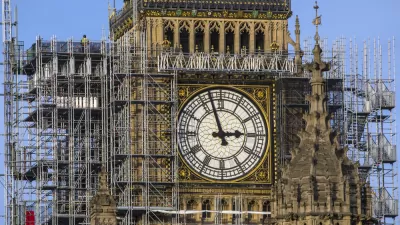Independent cultural institutions provide so much of what make cities world class, and they are a big part of the appeal for people who choose to live in highly urbanized areas. These days, cultural institutions are having a hard time affording rent.
London recently released a Cultural Infrastructure Plan, designed to protect and grow cultural facilities as the cost of real estate in the city drive institutions away from the city.
From the website promoting the new plan:
London is a city recognised as the global capital for arts and culture. Our theatres, music venues, museums and galleries are renowned across the world. Our creative industries are vital to London’s success and the recording studios, rehearsal spaces, artists' workspaces are the engine room that is responsible for generating £52 billion per year.
However, there has been a worrying decline in London’s cultural spaces, with the numbers of LGBT+ venues and grassroots music venues stabilising in the last year following a decade of decline.
London also released a Cultural Infrastructure Toolbox and a Cultural Infrastructure Map to accompany the new plan.
Following the announcement of London's plan, Jonathan Bowles and Eli Dvorkin write of the need for New York City to model a similar plan on the work done by London to protect its cultural institutions.
"The echoes of New York City are unmistakable: From escalating rents and operating costs to licensing and funding restrictions, the dance studios, music venues, theaters, workshops, and even skateparks that make London a global cultural capital are under unprecedented pressure," wrotes Bowles and Dvorkin. "Just like in London, artists and arts organizations provide the key building blocks of New York City’s broader creative economy, which supports roughly 300,000 jobs across the five boroughs. But there’s another, more painful, similarity: New York City has likewise been losing art spaces, affordable studios, and grassroots venues at a rapid clip."
As noted by Bowles and Dvorkin, the Center for an Urban Future in 2015 published a report called "Creative New York," that documented the decline of cultural institutions in the city of New York.
FULL STORY: OP-ED London Calling: New York Should Take a Cue from London Mayor Sadiq Khan’s Cultural Infrastructure Plan

Planetizen Federal Action Tracker
A weekly monitor of how Trump’s orders and actions are impacting planners and planning in America.

Map: Where Senate Republicans Want to Sell Your Public Lands
For public land advocates, the Senate Republicans’ proposal to sell millions of acres of public land in the West is “the biggest fight of their careers.”

Restaurant Patios Were a Pandemic Win — Why Were They so Hard to Keep?
Social distancing requirements and changes in travel patterns prompted cities to pilot new uses for street and sidewalk space. Then it got complicated.

Platform Pilsner: Vancouver Transit Agency Releases... a Beer?
TransLink will receive a portion of every sale of the four-pack.

Toronto Weighs Cheaper Transit, Parking Hikes for Major Events
Special event rates would take effect during large festivals, sports games and concerts to ‘discourage driving, manage congestion and free up space for transit.”

Berlin to Consider Car-Free Zone Larger Than Manhattan
The area bound by the 22-mile Ringbahn would still allow 12 uses of a private automobile per year per person, and several other exemptions.
Urban Design for Planners 1: Software Tools
This six-course series explores essential urban design concepts using open source software and equips planners with the tools they need to participate fully in the urban design process.
Planning for Universal Design
Learn the tools for implementing Universal Design in planning regulations.
Heyer Gruel & Associates PA
JM Goldson LLC
Custer County Colorado
City of Camden Redevelopment Agency
City of Astoria
Transportation Research & Education Center (TREC) at Portland State University
Camden Redevelopment Agency
City of Claremont
Municipality of Princeton (NJ)





























